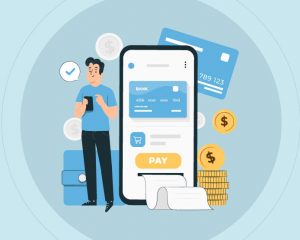As of 2021, over 2.14 billion digital buyers opt for an e-commerce shopping experience. People love to have fun, and if you build fun into your business, you can build engagement and create a memorable unboxing experience. Brands need to consider enhancements in digital technology to make online opportunities for shopping sprees that are hard to resist. Gamification is one enhancement brands should consider. You take the fun elements from games and add them into your product, services, and business to build interaction with your brand and convert to more sales. It doesn’t matter what industry you are in, and you can benefit from gamification. Gamification enhancements should follow the following guides:
Achievable Goals
The gamification element should be simple for everyone and offer a swift answer that people can easily understand. Avoid complicated or lengthy processes as users will quit halfway. When the user’s experience is more enjoyable, they are more likely to recommend it to friends.
Engaging Elements
Games are entertaining because they can inspire one to work hard and effectively reward that effort. You will need to ensure the design, visuals, and progress systems are optimised and adequately combined with psychological motivators.
Rewarding Results
Brands have to design a gamified experience that stands out, and it is necessary to create the perfect challenge for your users. You can always keep the excitement alive by introducing weekly or monthly quests with various freebie giveaways and discount codes.
It would be best to analyse what works best with your customer base and segment since, like with many marketing activities, things don’t work the same across every industry. Here are some gamification examples you can consider implementing:
Recommendation quizzes (personalising shopping experience)
Often new users are faced with a barrage of catalogues or products on the homepage. Quizzes encourage participation for new customers and personalise their online journey. Quizzes help customers define their preferences and discover which products best fit their shopping intention. Quizzes allow you to segment according to the type of consumer, which is crucial remarketing data.
Immediate prizes (instant gratification)
Discount scratches, roulette wheels, and raffles are some intriguing activity that allows you to grab customers’ attention instantly. This method immediately gets customers to act and reveal an automatic reward. You can collect users’ details easier in a less intrusive way by rewarding them with a discount code or for prize collection.
Loyalty and Referral Programs (gain long-term customers)
Rewarding customers is one of the best ways to engage customers, as they will exchange their earned points for rewards. This method is often an ongoing process for an extended period where customers can collect points or stamps to receive a prize. This highly accessible reward system appeals to most shoppers and most likely to inspire word of mouth to their network of friends.
Badges and challenges (sense of accomplishment)
Reward your customers with online badges to make them feel appreciated. For every purchase, review, referral, or reward, the user receives an experience badge. Apart from inspiring trust, it also builds engagement and encourages people to create a base of links, add reviews and shop more.
Product DIY (unique shopping experience)
The game-like approach to creating customisation adds interactivity to a product display. Customers can create a product fitting their preferences. Simultaneously, you can track customer preferences and utilise the data for targeted email and web push campaigns.
Competitive rankings (viral shareability)
You can increase online visibility through competitive gamification features as they tend to be shared more on social media and receive more promotion and impact. Encouraging customers to compete with each other for rewards, discounts and freebies create an engaged community that will actively increase your web traffic and yield more sales.
Making customers’ online shopping journey unforgettable with a defined course of activity with information leading to consecutive steps will help your business. It helps your customer progress through a predefined set of options that preferably leads to a sale.
By: Avinash Sagran

